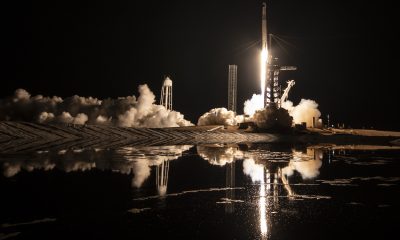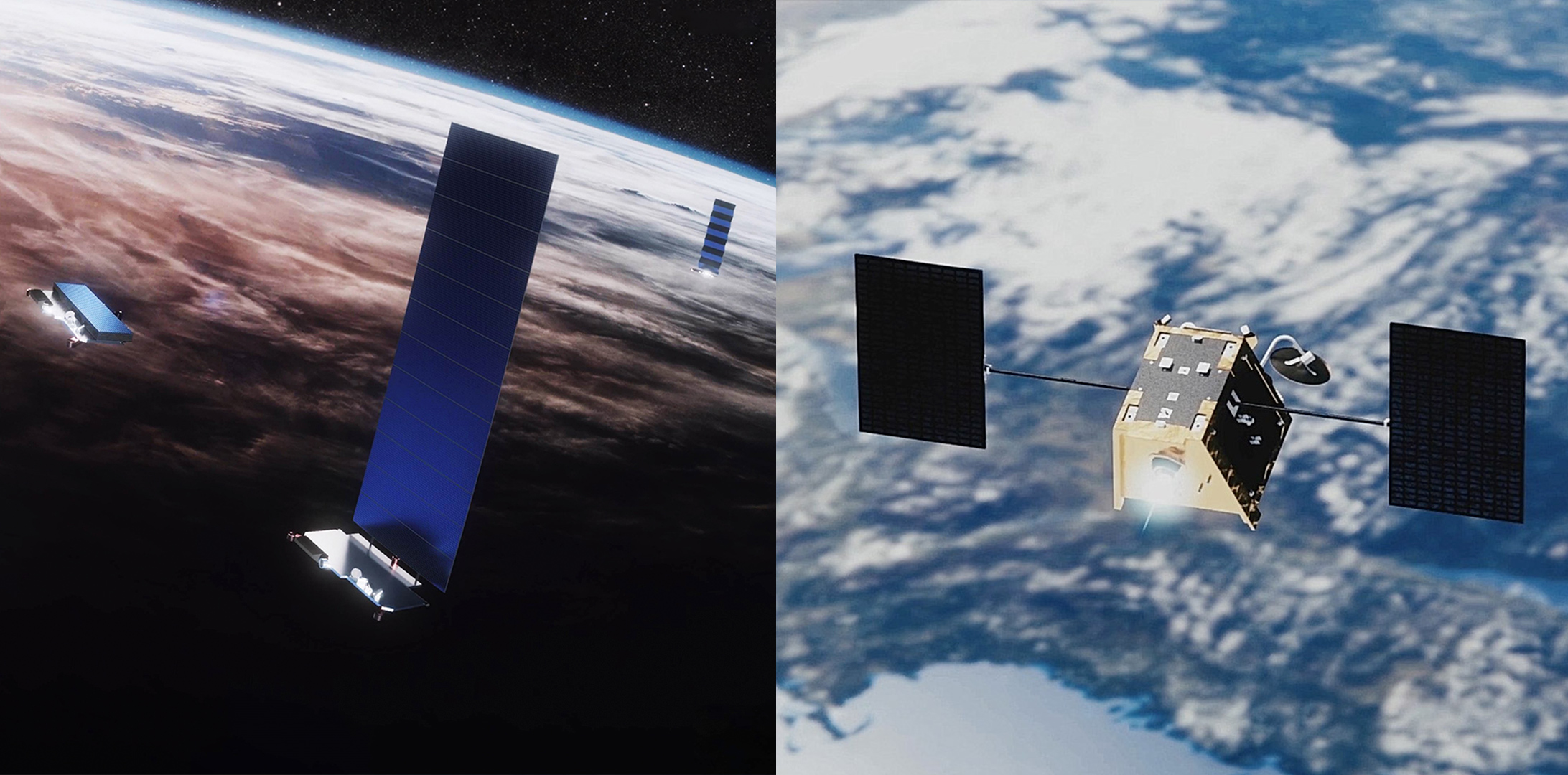

News
SpaceX Starlink competitor OneWeb misled the FCC, media with false “near-miss” narrative
In the latest trials and tribulations of a SpaceX Starlink competitor that went bankrupt after spending $3 billion to launch just 74 small internet satellites, it appears that OneWeb knowingly misled both media and US regulators over a claimed “near-miss” with a Starlink satellite.
Back on April 9th, OneWeb went public with claims that SpaceX had mishandled its response to a routine satellite collision avoidance warning from the US military, which monitors the location of satellites and space debris. According to OneWeb government affairs chief Chris McLaughlin, SpaceX disabled an automated system designed to detect and automatically command Starlink satellite collision avoidance maneuvers to let OneWeb move its satellite instead. McLaughlin also stated that “Coordination is the issue – it is not sufficient to say ‘I’ve got an automated system.’”
He also recently criticized the maneuverability of Starlink satellites, claiming that “Starlink’s engineers said they couldn’t do anything to avoid a collision and switched off the collision avoidance system so OneWeb could maneuver around the Starlink satellite without interference.” As it turns out, OneWeb’s “near-miss” appears to have been a farce and the company scrambled to promise to retract those statements in an April 20th meeting with the FCC and SpaceX.
In far more egregious comments made on April 20th to the Wall Street Journal, a publication with a long history of blindly disseminating anti-SpaceX rhetoric, McLaughlin likened OneWeb’s satellites to “Ford Focus” cars and attempted to lambast Starlink satellites by comparing them to “Teslas: They launch them and then they have to upgrade and fix them, or even replace them altogether.”
Over the past 17 months, SpaceX has launched more than 1380 operational Starlink v1.0 satellites, some 870 of which are operational. Another ~440 are in the process of reaching operational orbits. All told, some 1365 are still in orbit and around 1345 of those satellites are working as expected for a total Starlink v1.0 failure rate of roughly 2.5%. As is SpaceX’s bread and butter, however, reliability has been continuously improving and of ~960 Starlink satellites launched over the last ~12 months, the overall failure rate has dropped to less than 1% – an almost threefold improvement.
After exiting bankruptcy last November, OneWeb has completed just two more launches for a total of 140 operational satellites in orbit of a planned ~650. Operating at a much higher ~1200 km (~750 mi) orbit, any failure of OneWeb satellites would produce debris that could remain in orbit for decades, whereas SpaceX has explicitly chosen much lower ~550 km (~340 mi) orbits, meaning that debris reenters in a matter of years. At Starlink’s sub-300-kilometer (~185 mi) insertion orbit, any faulty satellites screened during SpaceX’s checkout process reenter in a matter of days or weeks thanks to drag from Earth’s atmosphere.
The first phase of SpaceX’s Starlink constellation will require approximately 4400 satellites in low Earth orbit (LEO) and the company is already almost a third of the way to that milestone. A second phase could see those numbers grow as high as ~12,000, followed by a third phase with more than 40,000 satellites much further down the road. Relative to OneWeb, Starlink is dramatically more ambitious and each SpaceX satellite offers superior bandwidth and latency in a bid to blanket the Earth in affordable, high-quality broadband internet.
Of course, as a consequence of needing so many satellites to build out a network with enough bandwidth to serve tens to hundreds of millions of people, there is an obvious risk that unreliable satellites could make LEO a much more challenging place to operate for both SpaceX and the rest of the world. It also demands an entirely new approach to collision avoidance given the impracticality of human operators manually managing a fleet of thousands – or tens of thousands – of satellites.
Towards that end, SpaceX is developing an autonomous collision avoidance system – though virtually nothing is known about that system outside of the company, creating a far from optimal situation for all other satellite operators. Nevertheless, aside from one publicized avoidance maneuver in 2019, SpaceX appears to be quickly becoming a responsible and (mostly) transparent operator and custodian.
In an apparent attempt to capitalize on vague fears of “space debris” and satellite collisions, OneWeb – or perhaps just McLaughlin – took it upon itself to consciously misconstrue a routine, professional process of collision-avoidance coordination between OneWeb and SpaceX. McLaughlin ran a gauntlet of media outlets to drag SpaceX through the mud and criticize both the company’s technology and response, ultimately claiming that SpaceX’s Starlink satellite was incapable of maneuvering out of the way.
Instead, according to a precise, evidenced timeline of events presented by SpaceX to the FCC, the coordination was routine, uneventful, and entirely successful. OneWeb itself explicitly asked SpaceX to disable its autonomous collision avoidance software and allow the company to maneuver its own satellite out of the way after SpaceX made it clear that the Starlink spacecraft could also manage the task. The event was neither “urgent” or a “close call,” as OneWeb and media outlets later claimed. SpaceX says it has been coordinating similar avoidance maneuvers with OneWeb since March 2020.
Most damningly, SpaceX says that immediately after OneWeb disseminated misleading quotes about the event to the media, “OneWeb met with [FCC] staff and Commissioners [to demand that] unilateral conditions [be] placed on SpaceX’s operations.” Those conditions could have actually made coordination harder, “demonstrating more of a concern with limiting [OneWeb’s] competitors than with a genuine concern for space safety.” Crucially, despite lobbying to restrict its competitors, “OneWeb [has] argued forcefully that [it] should be exempt from Commission rules for orbital debris mitigation due to their status as non-U.S. operators.”
In simple terms, OneWeb is trying to exploit the FCC to suppress its competition while letting it roam free of the exact same regulations. Meanwhile, SpaceX is focused on launching satellites and serving tens of thousands of beta customers as Starlink speeds towards virtually uninterrupted global coverage barely a year and a half after operational launches began – all while coordinating with dozens of other satellite operators to be the best ‘neighbor’ it can be in space.
News
Tesla begins Robotaxi certification push in Arizona: report
Tesla seems serious about expanding its Robotaxi service to several states in the coming months.

Tesla has initiated discussions with Arizona transportation regulators to certify its driverless Robotaxi service in the state, as per a recent report from Bloomberg News. The move follows Tesla’s launch of its Robotaxi pilot program in Austin, Texas, as well as CEO Elon Musk’s recent comments about the service’s expansion in the Bay Area.
The Arizona Department of Transportation confirmed to Bloomberg that Tesla has reached out to begin the certification process for autonomous ride-sharing operations in the state. While details remain limited, the outreach suggests that Tesla is serious about expanding its driverless Robotaxi service to several territories in the coming months.
The Arizona development comes as Tesla prepares to expand its service area in Austin this weekend, as per CEO Elon Musk in a post on X. Musk also stated that Tesla is targeting the San Francisco Bay Area as its next major market, with a potential launch “in a month or two,” pending regulatory approvals.
Tesla first launched its autonomous ride-hailing program on June 22 in Austin with a small fleet of Model Y vehicles, accompanied by a Tesla employee in the passenger seat to monitor safety. While still classified as a test, Musk has said the program will expand to about 1,000 vehicles in the coming months. Tesla will later upgrade its Robotaxi fleet with the Cyercab, a two-seater that is designed without a steering wheel.
Sightings of Cybercab castings around the Giga Texas complex suggests that Tesla may be ramping the initial trial production of the self-driving two-seater. Tesla, for its part, has noted in the past that volume production of the Cybercab is expected to start sometime next year.
In California, Tesla has already applied for a transportation charter-party carrier permit from the state’s Public Utilities Commission. The company is reportedly taking a phased approach to operating in California, with the Robotaxi service starting with pre-arranged rides for employees in vehicles with safety drivers.
News
Tesla sets November 6 date for 2025 Annual Shareholder Meeting
The automaker announced the date on Thursday in a Form 8-K.
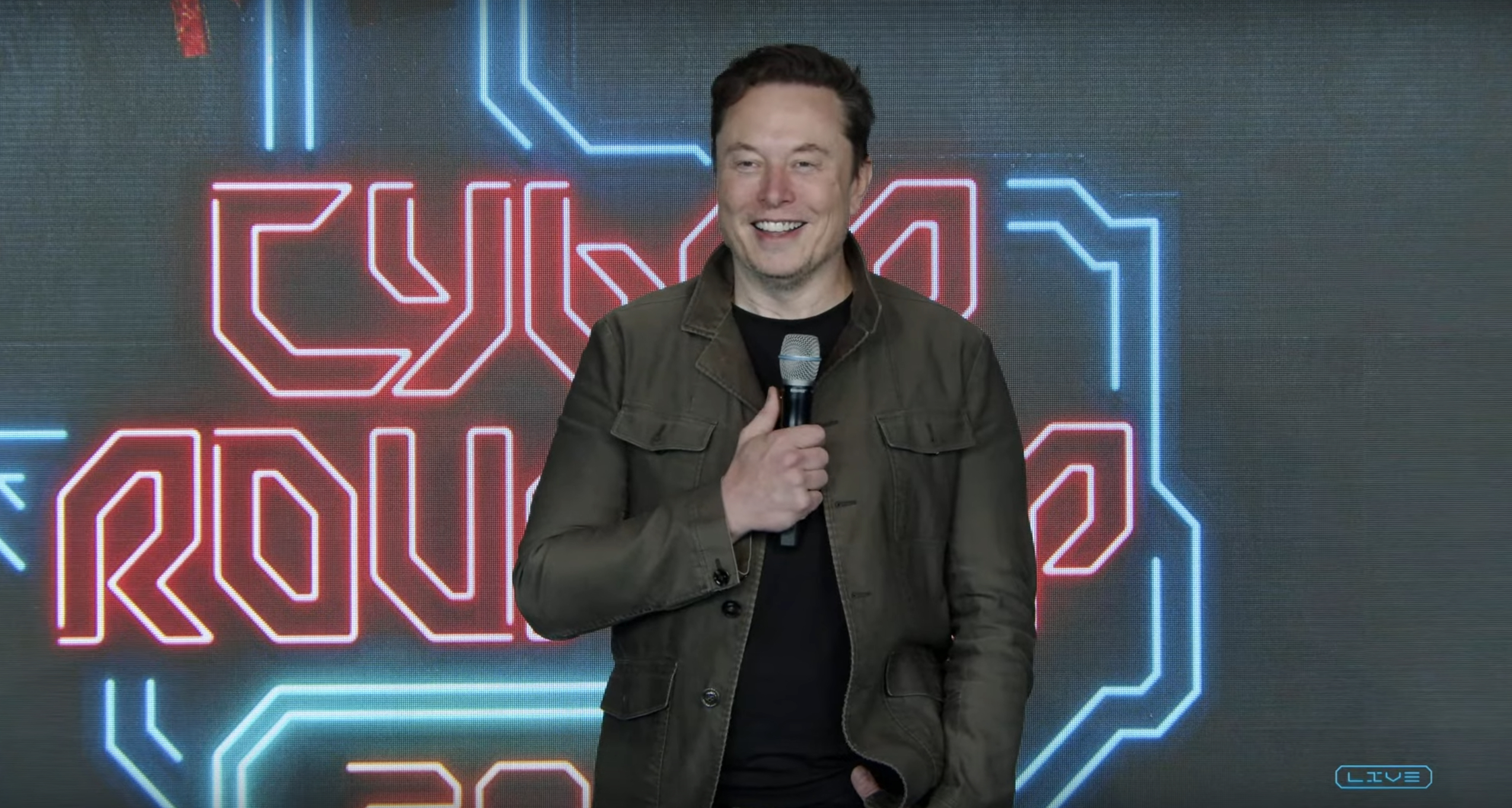
Tesla has scheduled its 2025 annual shareholder meeting for November 6, addressing investor concerns that the company was nearing a legal deadline to hold the event.
The automaker announced the date on Thursday in a Form 8-K submitted to the United States Securities and Exchange Commission (SEC). The company also listed a new proposal submission deadline of July 31 for items to be included in the proxy statement.
Tesla’s announcement followed calls from a group of 27 shareholders, including the leaders of large public pension funds, which urged Tesla’s board to formally set the meeting date, as noted in a report from The Wall Street Journal.
The group noted that under Texas law, where Tesla is now incorporated, companies must hold annual meetings within 13 months of the last one if requested by shareholders. Tesla’s previous annual shareholder meeting was held on June 13, 2024, which placed the July 13 deadline in focus.
Tesla originally stated in its 2024 annual report that it would file its proxy statement by the end of April. However, an amended filing on April 30 indicated that the Board of Directors had not yet finalized a meeting date, at least at the time.
The April filing also confirmed that Tesla’s board had formed a special committee to evaluate certain matters related to CEO Elon Musk’s compensation plan. Musk’s CEO performance award remains at the center of a lengthy legal dispute in Delaware, Tesla’s former state of incorporation.
Due to the aftermath of Musk’s legal dispute about his compensation plan in Delaware, he has not been paid for his work at Tesla for several years. Musk, for his part, has noted that he is more concerned about his voting stake in Tesla than his actual salary.
At last year’s annual meeting, TSLA shareholders voted to reapprove Elon Musk’s compensation plan and ratified Tesla’s decision to relocate its legal domicile from Delaware to Texas.
Elon Musk
Grok coming to Tesla vehicles next week “at the latest:” Elon Musk
Grok’s rollout to Tesla vehicles is expected to begin next week at the latest.
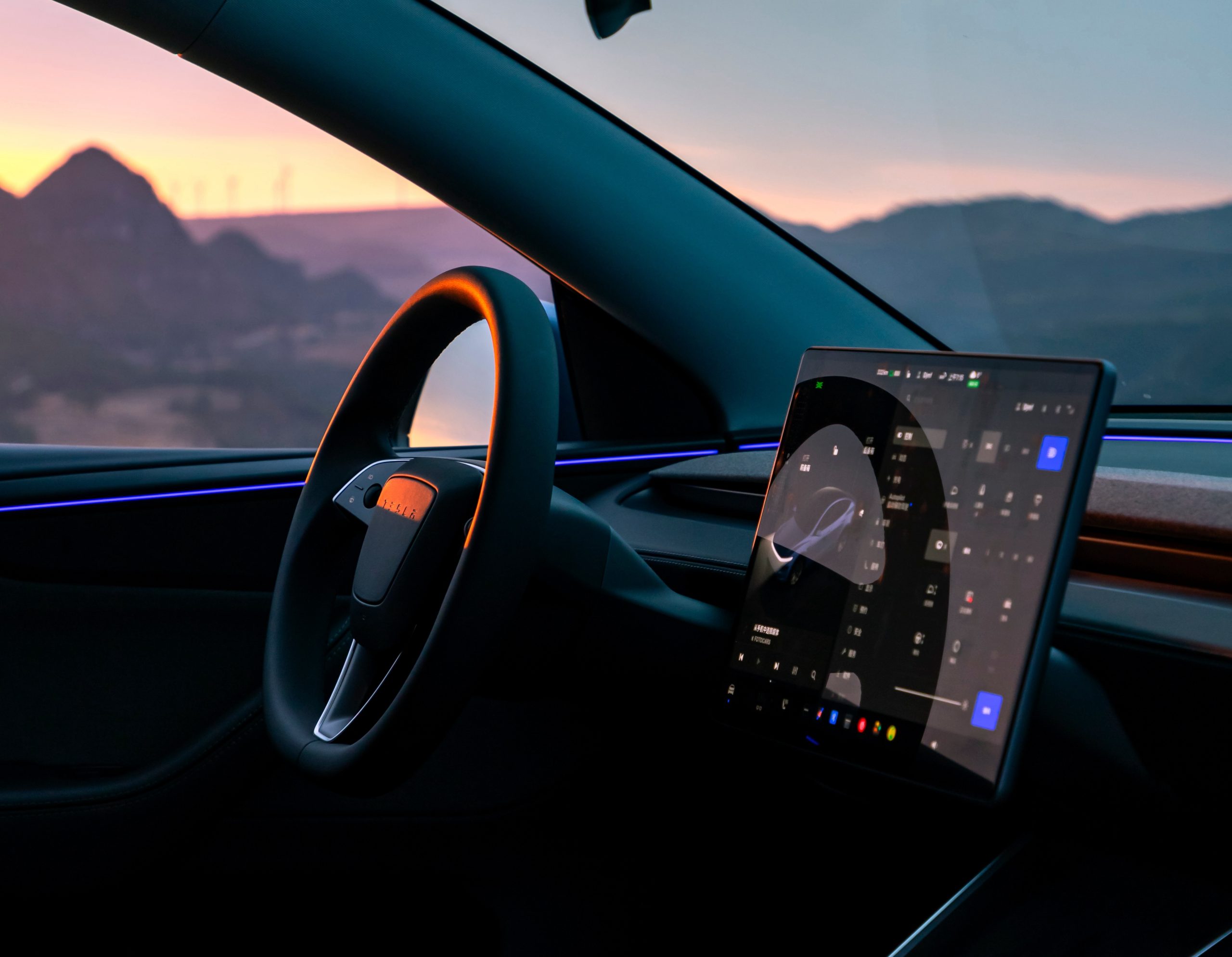
Elon Musk announced on Thursday that Grok, the large language model developed by his startup xAI, will soon be available in Tesla vehicles. Grok’s rollout to Tesla vehicles is expected to begin next week at the latest, further deepening the ties between the two Elon Musk-led companies.
Tesla–xAI synergy
Musk confirmed the news on X shortly after livestreaming the release of Grok 4, xAI’s latest large language model. “Grok is coming to Tesla vehicles very soon. Next week at the latest,” Musk wrote in a post on social media platform X.
During the livestream, Musk and several members of the xAI team highlighted several upgrades to Grok 4’s voice capabilities and performance metrics, positioning the LLM as competitive with top-tier models from OpenAI and Google.
The in-vehicle integration of Grok marks a new chapter in Tesla’s AI development. While Tesla has long relied on in-house systems for autonomous driving and energy optimization, Grok’s integration would introduce conversational AI directly into its vehicles’ user experience. This integration could potentially improve customer interaction inside Tesla vehicles.
xAI and Tesla’s collaborative footprint
Grok’s upcoming rollout to Tesla vehicles adds to a growing business relationship between Tesla and xAI. Earlier this year, Tesla disclosed that it generated $198.3 million in revenue from commercial, consulting, and support agreements with xAI, as noted in a report from Bloomberg News. A large portion of that amount, however, came from the sale of Megapack energy storage systems to the artificial intelligence startup.
In July 2023, Musk polled X users about whether Tesla should invest $5 billion in xAI. While no formal investment has been made so far, 68% of poll participants voted yes, and Musk has since stated that the idea would be discussed with Tesla’s board.
-

 Elon Musk2 weeks ago
Elon Musk2 weeks agoTesla investors will be shocked by Jim Cramer’s latest assessment
-

 Elon Musk1 day ago
Elon Musk1 day agoxAI launches Grok 4 with new $300/month SuperGrok Heavy subscription
-

 Elon Musk3 days ago
Elon Musk3 days agoElon Musk confirms Grok 4 launch on July 9 with livestream event
-

 News1 week ago
News1 week agoTesla Model 3 ranks as the safest new car in Europe for 2025, per Euro NCAP tests
-
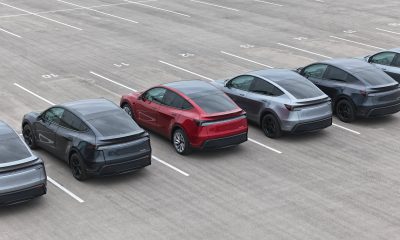
 Elon Musk2 weeks ago
Elon Musk2 weeks agoA Tesla just delivered itself to a customer autonomously, Elon Musk confirms
-

 Elon Musk1 week ago
Elon Musk1 week agoxAI’s Memphis data center receives air permit despite community criticism
-
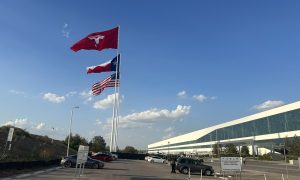
 Elon Musk2 weeks ago
Elon Musk2 weeks agoTesla’s Omead Afshar, known as Elon Musk’s right-hand man, leaves company: reports
-

 News2 weeks ago
News2 weeks agoXiaomi CEO congratulates Tesla on first FSD delivery: “We have to continue learning!”


